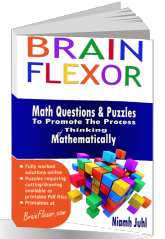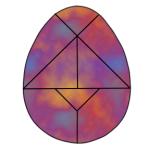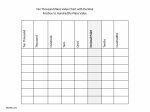Multiple Digit Addition Made Easy!
Multiple digit addition is the last step in my whole number section. Before continuing be sure your child is comfortable with the following.
Use Base 10 Blocks to teach Double Digit Addition
Base 10 Blocks are a wonderful tool to teach your child multiple digit addition where 'carry over' exists. If you are not familiar with this manipulative, or just don't own them, you can go here to learn about them, and to access a free printable template to create your own.
The only Rule of Base 10 Blocks
You can NEVER have 10 or more of any one type of block. If I do, I must trade 10 of the smaller block for 1 of the next size up.
That's it! Your child must know this and understand it, and the following information should make this clear to you. Once your child gets the hang of this - multiple digit addition will never be a problem again!
Multiple Digit Addition - Worked Example
To proceed with this example you will need my Multiple Digit Addition Template.
9 + 13
|
Step 1: |
Just as with the grouping method of addition, count out 9 squares and place them in the units box on Line 1 of the addition template. |
|
Step 2: |
Count out 13 Squares and place them in the units box on Line 2 of the template. |
|
Step 3: |
Ask the question! Do you have ten or more of any type of block in any box? Answer - YES. (There are 13 squares in Line 2) Ask the question! What is the rule? Your child should know the rule from above! No More than 10 in any box! |
|
Step 4 |
Trade up! Count out 10 Squares and 'trade up' to 1 long. |
|
Step 5: |
Put all block types in the correct positions. Put the long in the 10's box of line 2 |
|
Step 6: |
Combine Units into line 3 |
|
Step 7: |
Ask the question! Do you have ten or more of any type of block in any box?Answer - YES. (There are 12 squares in the units box of Line 3) Ask the question! What is the rule? No more than 10 in any box! |
|
Step 8: |
Trade up! Count out 10 Squares and 'trade up' to 1 long. Put this long in the 10's box on line 3. |
|
Step 9. |
Combine all longs from lines 1 and 2, into line 3. |
|
Step 10: |
Read the answer. There are 2 longs in the 10's box of line 3, and 2 squares in the units box of line 3, giving us the answer 22. |
And that is it. The trade up, is what traditionally was called 'carry over'. This may seem like a long winded way to explain addition, however I can almost guarantee that once your child is adding this way, no addition problem will give them trouble ever again.
You will most likely also find, that your child will start 'skipping steps', especially those where the 'trade up' is required. When they are placing the units, they will start to place them in the 10's and units section, rather than placing them all in the units section originally - you want this to happen, so don't correct them when they start doing this!
What's Next?
Ensure your child gets a lot of practice with this method, and it will soon become second nature. Print off my Multiple Digit Addition Worksheets, which correspond with the addition template, and watch, as your child becomes an adding machine!
Don't forget to explore all of what Printable Math Worksheets offers.
Keep In Touch!
You can send me a quick message, subscribe to K6Math Fun & Update, or join my Facebook Page - K6Math. Choose all the options so you don't miss any of the new material added to this site.






